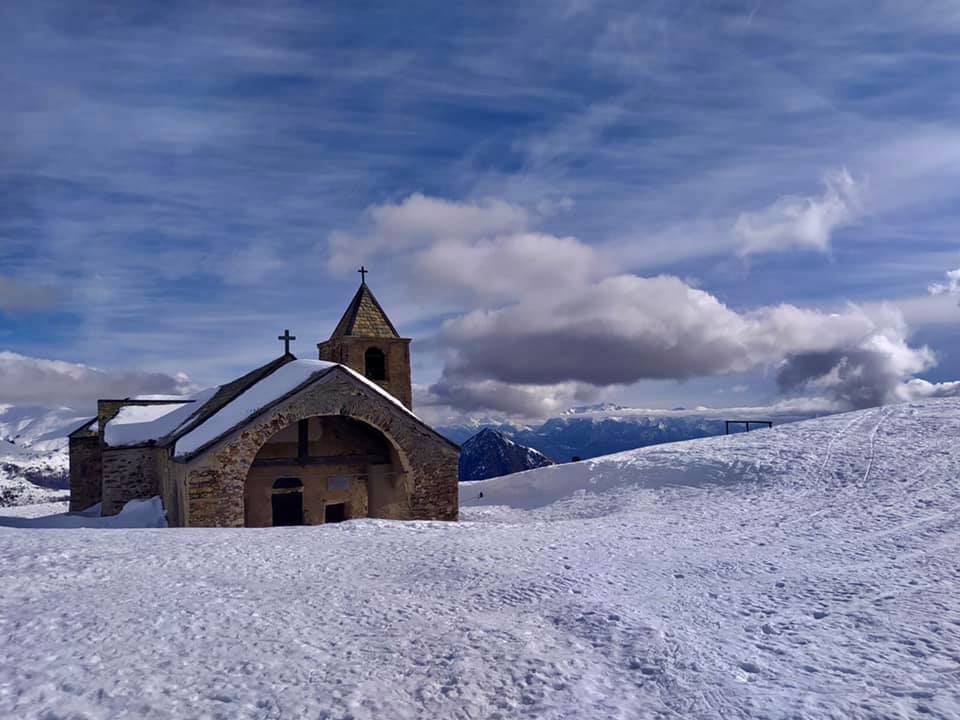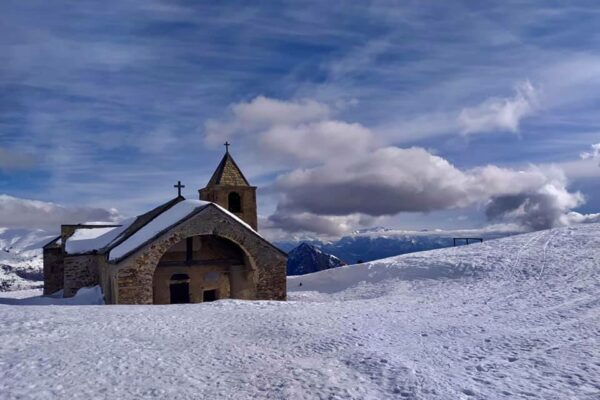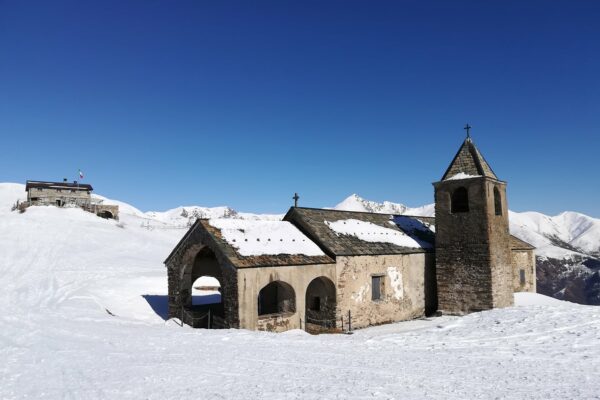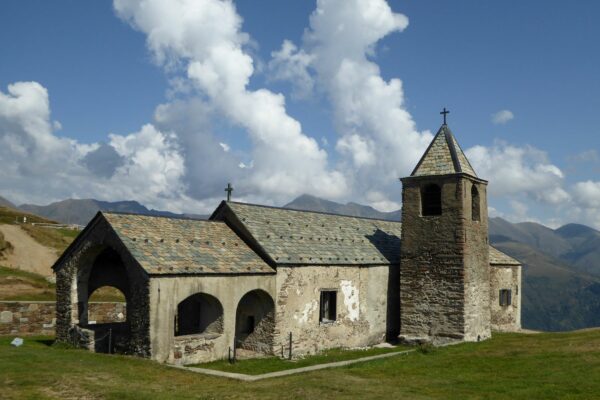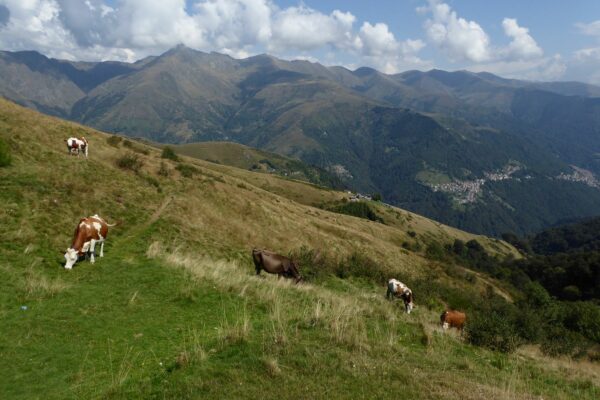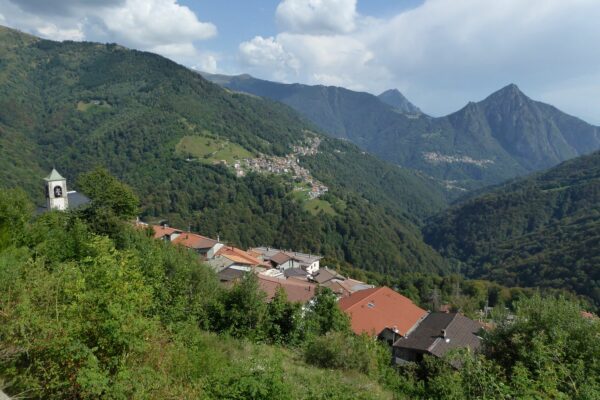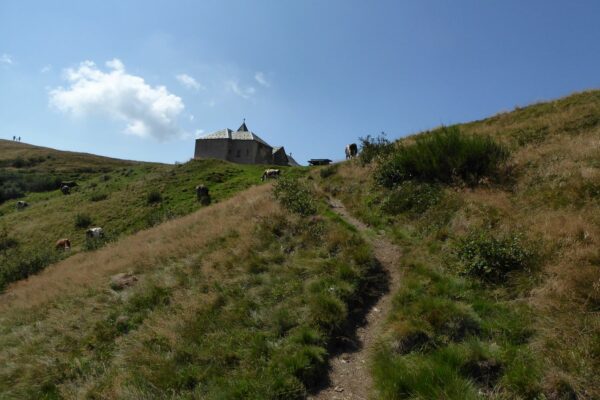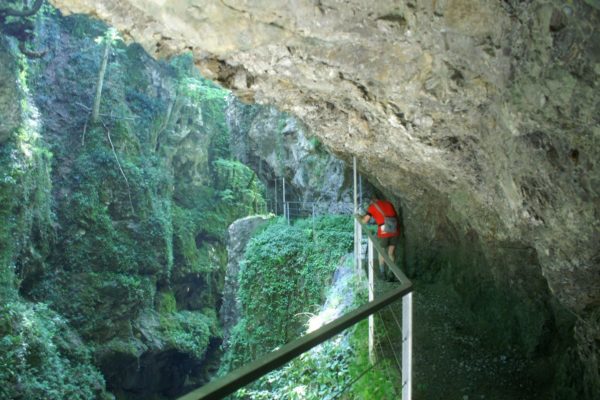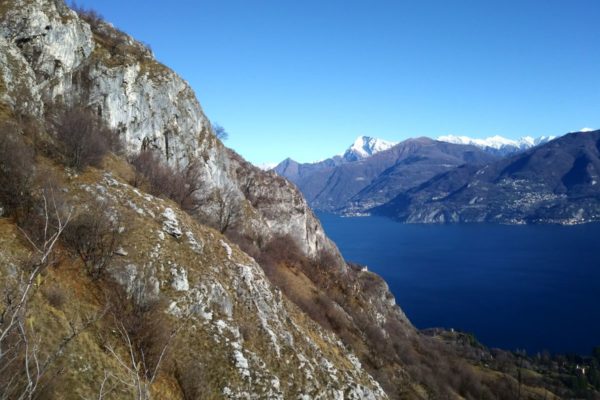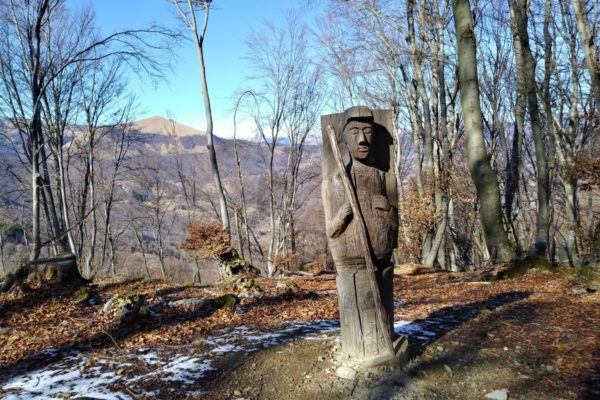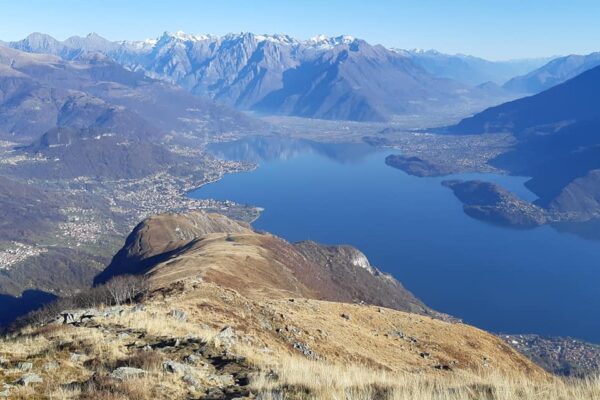A walk among pasture fields and over steep slopes to the church of San Lucio (1542 m), which stands on the border pass between Val Colla (Switzerland) and Val Cavargna (Italy) and offers amazing views of the surrounding mountains and the Alps. In the past this was an important transit route. Near the church, the refuge “San Lucio” provides refreshments and lodging and is open almost all year round mob. +39 375 6083460.
Description
Cavargna (1071 m) is the highest municipality in the province of Como and lies in the remote valley of Val Cavargna, clustered to the slopes of Monte Garzirola.
Get off the bus at the last bus stop near the town hall. From here the splendid view embraces the whole valley and the summit of Pizzo di Gino 2245 m on the left. From the bus stop head to the Parish church and take the track on the left side of the church which climbs uphill to the “Colonia”.
The path follows a short stretch of “Sentiero delle 4 Valli”, a 50 km long hiking trail that leads from Breglia, above Menaggio, to Dasio above Lake Lugano. The trail winds up its way through four valleys- Val Sanagra, Val Cavargna, Val Rezzo and Valsolda – and can be walked in three days.
The path skirts the edge of a beech wood called “Bosco Sacro” – which forms a natural barrier against snow and landslides – before entering the steep, narrow Val Marda. After crossing the bridge over the stream in the Val Molino, the trail ascends the opposite side of the valley. At the fork you turn right and follow the track through the pastures to Monti Coloné (1400 m, 1.30hrs ), where you find a group of houses. From here the wonderful view embraces the Val Cavargna.
To reach San Lucio, take the small trail behind the fountain leaving the “Sentiero delle 4 Valli”. The path winds up the steep slope over the pasture fields to the crest and the church of San Lucio (1542 m).
The church San Lucio stands right on the Swiss – Italian border. It dates back to the 15th century and has always been a cultural and devotional point of reference for Swiss and Italian people. Inside, there are paintings from the 15th up to the 17th century and a 15th century wooden statue which represents Saint Lucio, patron of shepherds and cheesemakers. He is celebrated on the 12th of July and 16th of August with a popular festival attracting a lot of people from the surrounding Italian and Swiss valleys.
Rifugio San Lucio
Next to the church, you can find Rifugio San Lucio, a former Customs police barracks built in 1903.
Customs Service used to patrol the border barred by a long wire fencing called “ramina”, to stop any contraband. As a matter of fact, smuggling was a widespread phenomenon in this region, due to the poor living conditions. Goods such as sigarettes, salt and coffee were transported in special rugsacks called “bricolla” by the local smugglers the so-called “spalloni” (large shoulders) from Switzerland into Italy. They moved along the narrow steep mountain trails which they knew by heart using a long stick to secure their passage. Their boots were covered with rags of jute to prevent them from making any noise. When the economic conditions improved in the 1960’s, the barracks was closed and left abandoned until it was turned into a Rifugio in 1999. The adventurous stories of the Spalloni” are often told around the fire places in winter.
Walk to Monte Garzirola
From San Lucio you can reach the top of Monte Garzirola (2116 m) by following the grassy crest of the mountain (1h 15 min). The crest forms the border between Italy and Switzerland. You can still notice some remains of the former barbed border fencing. From the peak you have an amazing view of the surrounding Lepontine Alps, of Lake Lugano and Lake Maggiore and the Alpine chain.
Either from the top of Monte Garzirola or from San Lucio you walk back the same way you came to Cavargna.
Note: In front of the parish church of Cavargna there is the interesting museum called “Museo della Valle”. The Museum illustrates the local history, traditions and customs focusing on the contraband phenomenon and the old mining and siderurgical activities. The figures of the magnan, the blacksmith, the alpine farmers, the woodcutter, the carpenter and the contrabandist, as well as various aspects of daily existence. It is open from Easter to November 1st Saturday and Sunday from 2.00 pm to 5.00 pm – on other days on request tel. +39 0344 63162.
Directions & Parking
Parking
Free parking opposite the town hall of Cavargna
By public transport
You can reach Cavargna by bus line C14 from Menaggio
